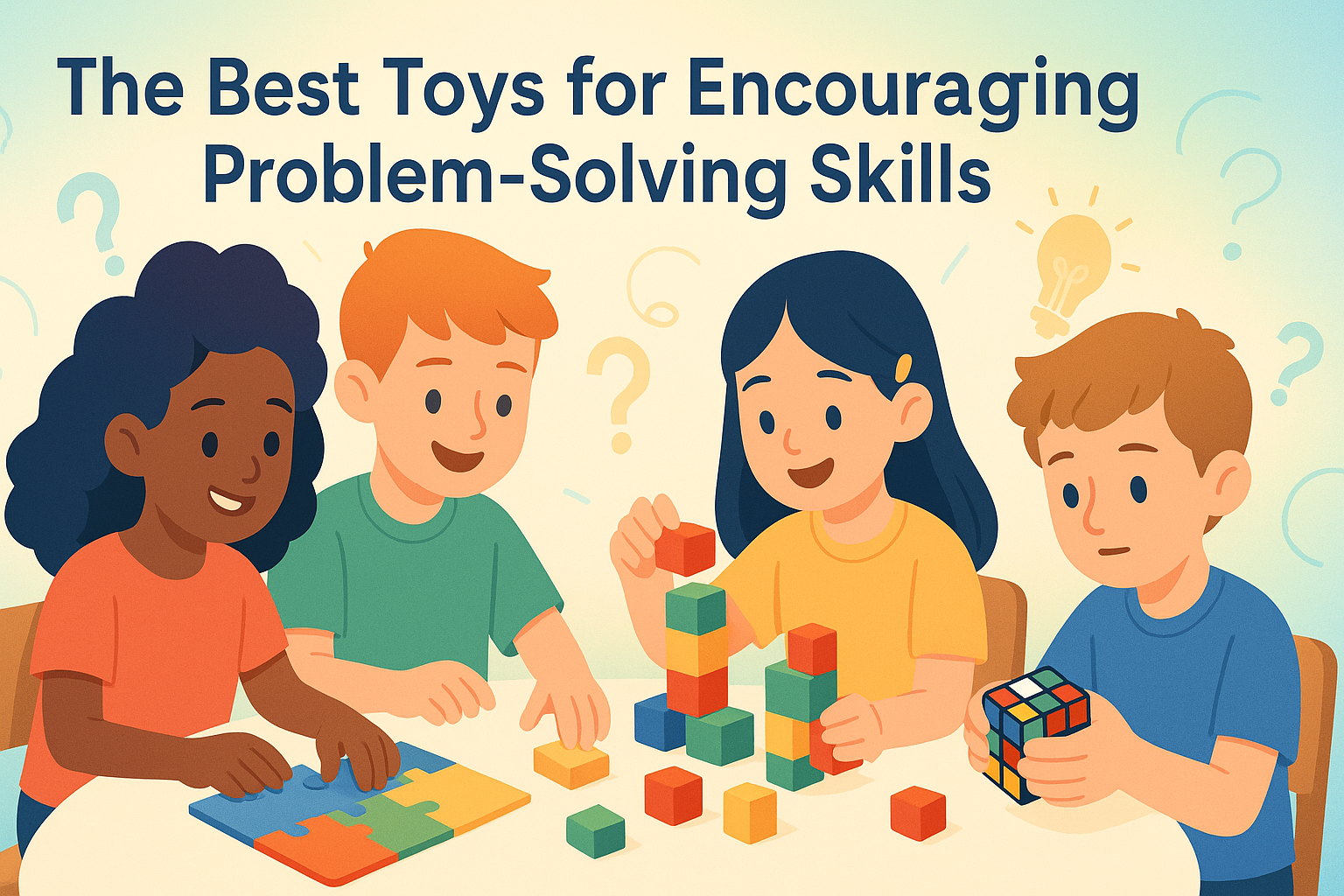The Best Toys for Encouraging Problem-Solving Skills
Problem-solving is a critical life skill that sets the foundation for success in school, work, and everyday challenges. Encouraging children to develop these skills from a young age can be both fun and educational, especially with the right toys. In this blog post, we’ll explore the best toys designed to enhance problem-solving skills in children. Whether you’re a parent, teacher, or caregiver, these toys are sure to engage young minds and foster essential cognitive skills. 🎲
Table of Contents
1. Introduction
2. Why Problem-Solving Skills Matter
3. Top Toys for Problem-Solving Skills
a. Puzzles
b. Building Sets
c. Board Games
d. Logic Games
e. STEM Toys
4. Conclusion
5. FAQs
Why Problem-Solving Skills Matter
Problem-solving is more than just finding solutions; it’s about critical thinking, creativity, and resilience. These skills help children navigate complex situations, make decisions, and understand cause and effect. Toys that promote problem-solving can significantly contribute to a child’s development, offering a playful approach to learning these invaluable skills. 🎯
Top Toys for Problem-Solving Skills
Puzzles 🧩
Puzzles are a classic choice for developing problem-solving skills. They require children to think strategically, recognize patterns, and understand how pieces fit together to form a whole. Puzzles come in various forms, from simple jigsaws for younger children to complex 3D puzzles for older kids. They also enhance fine motor skills and spatial awareness.
Building Sets 🏗️
Building sets, such as LEGO and K’NEX, are excellent for encouraging open-ended play and creativity. These toys challenge children to think about construction from the ground up, teaching them about balance, symmetry, and design. As kids build and rebuild, they learn to solve structural problems, fostering both creativity and engineering skills.
Board Games 🎲
Board games are not only a great way to spend time with family and friends but also a fantastic tool for developing problem-solving skills. Games like “Clue,” “Settlers of Catan,” and “Ticket to Ride” require strategic thinking, planning, and decision-making. Through gameplay, children learn to anticipate opponents’ moves, manage resources, and work towards long-term goals.
Logic Games 🧠
Logic games are designed specifically to engage the brain in critical thinking. Games like “Rush Hour” and “Gravity Maze” challenge children to solve puzzles by applying logic and reasoning. These games often come with multiple levels of difficulty, allowing kids to progress and enhance their problem-solving abilities over time.
STEM Toys 🔬
STEM (Science, Technology, Engineering, and Mathematics) toys are designed to foster curiosity and experimentation. Kits like “Snap Circuits” and “Tinker Crate” engage children in building electronic projects or conducting scientific experiments. These toys encourage problem-solving by requiring kids to hypothesize, test, and troubleshoot their creations.
Conclusion
Choosing the right toys can make a significant difference in a child’s ability to develop problem-solving skills. The toys mentioned above not only provide entertainment but also stimulate cognitive development, critical thinking, and creativity. By integrating these toys into playtime, you’re not just giving a gift of fun but a gift of lifelong skills. 🎁
FAQs
Q: What age is best for introducing problem-solving toys?
A: It’s never too early to start! There are problem-solving toys designed for all ages, from toddlers to teenagers. The key is to choose toys that match your child’s developmental stage and interests.
Q: Can problem-solving toys be educational?
A: Absolutely! Many problem-solving toys are educational by nature, teaching children about math, science, and engineering concepts while they play.
Q: Are digital games effective for problem-solving skills?
A: Yes, many digital games are designed to enhance problem-solving skills. However, it’s essential to balance screen time with physical play to ensure a well-rounded development.
By incorporating these toys into your child’s playtime, you’re setting them up for success, one puzzle piece at a time. Happy playing! 🎉
